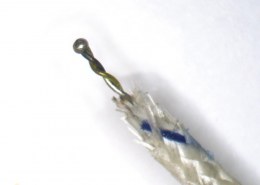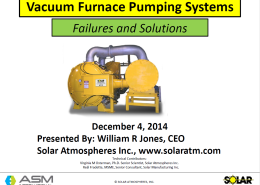The leak-up rate you should be looking for depends primarily on the type of base metals you are trying to braze. As mentioned at the beginning of this article, any air leak into the furnace represents an influx of oxygen into the furnace. Metals vary considerably in their tolerance of oxygen, with nRead more
The leak-up rate you should be looking for depends primarily on the type of base metals you are trying to braze. As mentioned at the beginning of this article, any air leak into the furnace represents an influx of oxygen into the furnace. Metals vary considerably in their tolerance of oxygen, with nickel and gold being examples of metals that have a large tolerance for the presence of oxygen. That is, they will not oxidize to the point that there is any negative effect on brazing.
However, other metals, such as chromium, or base metals which contain titanium and/or aluminum in their chemistry, will be highly sensitive to the presence of any oxygen in the furnace. Thus, may I suggest the following as a guideline for vacuum-furnace brazing:
Tolerable Vacuum Furnace Leak-up Rates:
- For base metals that contain any titanium or aluminum: less than five (5) microns per hour.
- For base metals containing chromium (Cr), or manganese (Mn) but no titanium and/or aluminum: less than ten (10) microns per hour.
- For base metals containing nickel (Ni), gold (Au), etc., but without any Cr or Mn or Ti or Al: less than fifteen (15) microns per hour.>>> READ MORE
SOURCE: Kay & Assoc. Brazing Consultants
See less


Our blog post takes a short look at the AMS2750E standard, with a special focus on the requirements set for calibration, calibration accuracy, and test/calibration equipment. The AMS2750E is predominantly designed for heat treatment in the aerospace industry. Heat treatment is an essential process fRead more
Our blog post takes a short look at the AMS2750E standard, with a special focus on the requirements set for calibration, calibration accuracy, and test/calibration equipment. The AMS2750E is predominantly designed for heat treatment in the aerospace industry. Heat treatment is an essential process for many critical parts of an airplane, so it is understandable that there are tight regulations and audit processes set. While the results and success of some other industrial processes can be relatively easily measured after the process, this is not the case in a heat treatment process. Therefore, very tight control and documentation of the heat treatment process are essential to ensure the quality of the end products.>>>READ MORE
Source: Beamex Blog for Calibration Professionals
See less